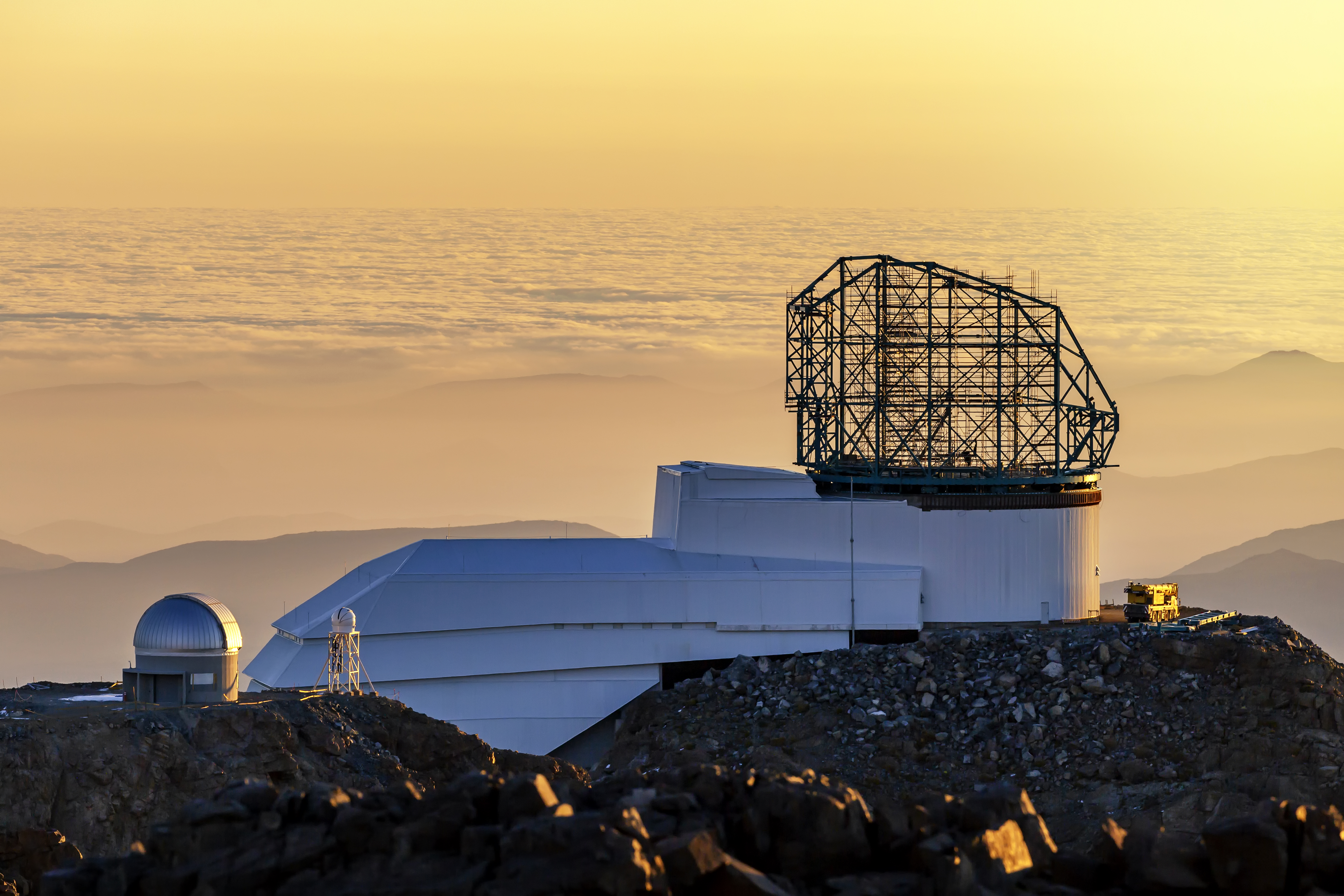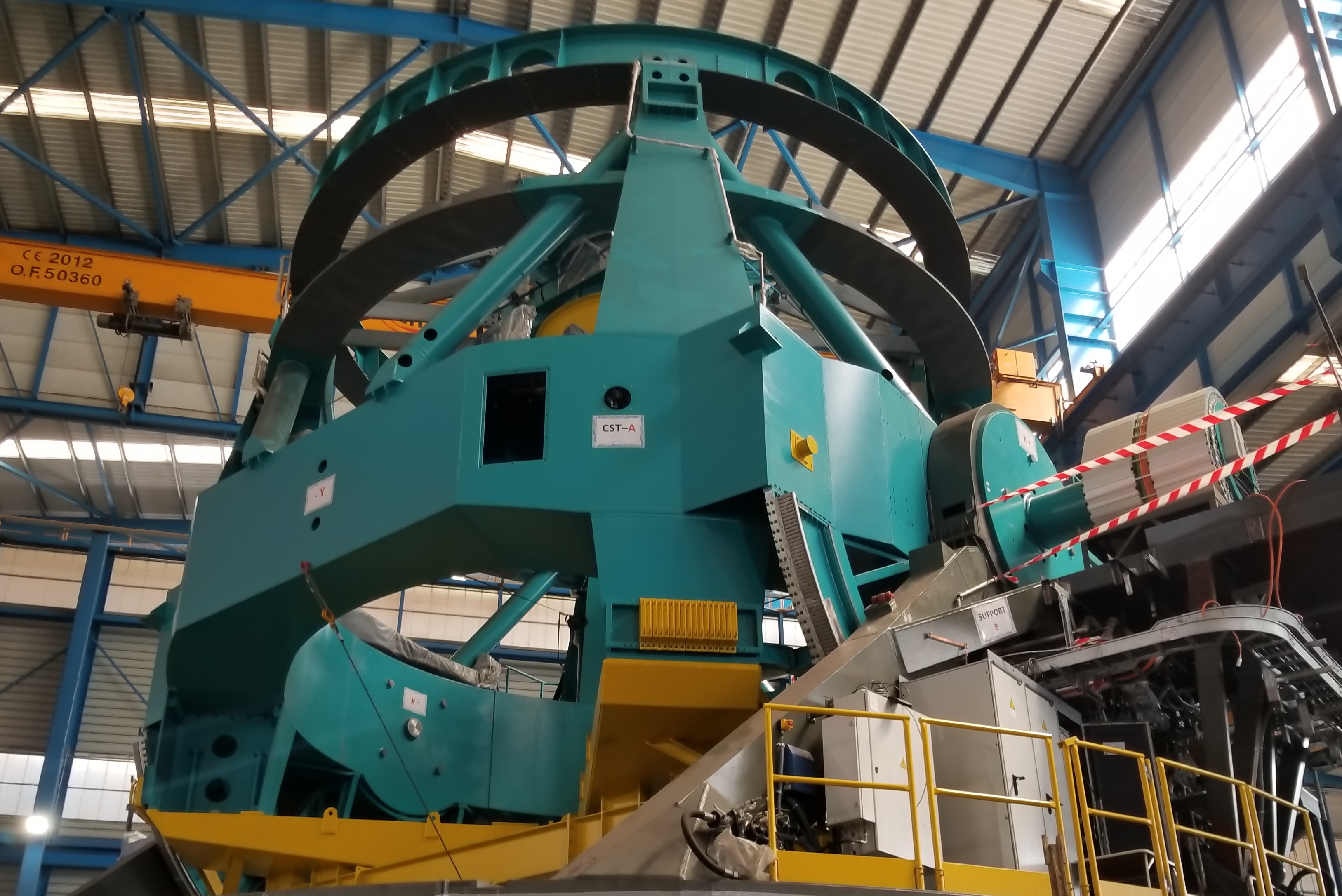LSST
Rubin Observatory's Legacy Survey of Space and Time (LSST)
The Rubin Observatory is a novel wide-field, ground-based telescope and camera, designed to image a substantial fraction of the sky in six optical bands every few nights. It is planned to operate for a decade allowing the stacked images to detect galaxies to redshifts well beyond unity. The LSST survey is designed to meet the requirements of a broad range of science goals in astronomy, astrophysics and cosmology, including the study of the physics of dark energy and dark matter. The LSST was the top-ranked large ground-based initiative in the 2010 National Academy of Sciences decadal survey in astronomy and astrophysics. The Dark Energy and Dark Matter science goals of LSST are:
- Weak gravitational lensing: the detection of light from distant sources due to the bending of space-time baryonic and dark matter along the line of sight. Tomographic measurements of weak lensing will provide percent-level constraints on cosmological parameters.
- Large-scale structure: the large-scale power spectrum for the spatial distribution of matter as a function of redshift. This includes the Baryonic Acoustic Oscillations and the measurement of the distance-redshift relation. With the enormous number of galaxies detected by LSST, the co-moving distance will be measured with percent-level precision.
- Type Ia Supernovae: luminosity distance as a function of redshift measured with Type Ia SNe as standardizable candles. LSST will discover and measure at least 500 SNe 1a per season, giving tens of thousands of well- measured SNe 1a light curves up to z ~1 over the full ten-year survey.
- Galaxy clusters: the spatial density, distribution, and masses of galaxy clusters as a function of redshift. LSST will be able to measure the masses of ∼20,000 clusters to a precision of 10%.
- Strong gravitational lensing: the angular displacement, morphological distortion, and time delay for the multiple images of a source object due to a massive foreground object. LSST will give a sample of ∼2600 time-delayed lensing systems, an increase of 100× compared to the sample available today.

The observatory is located on Cerro Pachon in northern Chile (near the Gemini South and SOAR telescopes), with first light expected in 2025. The LSST survey will yield contiguous overlapping imaging of over half the sky in six optical bands (ugrizy, covering the wavelength range 320-1050 nm). The LSST camera provides a 3.2 Gigapixel at focal plane array, tiled by 189 4kx4k CCD science sensors with 10µm pixels. This pixel count is a direct consequence of sampling the 9.6 deg2 field-of-view (0.64m diameter) with 0.2x0.2 arcsec pixels (Nyquist sampling in the best expected seeing of ∼0.4 arcsec). The observing strategy for the main survey will be optimized for homogeneity of depth and number of visits. The current baseline design will allow about 20,000 deg2 of sky to be covered using pairs of 15-second exposures in two photometric bands every three nights on average, with typical 5σ depth for point sources of r ~24.5 mag. The system will yield high image quality as well as superb astrometric and photometric accuracy for a ground- based survey. The coadded data within the main survey footprint will have a depth of r ~27.5 mag. 10% of observing time will be used to obtain improved coverage of parameter space, such as very deep (r ∼ 26 mag) observations taken over the course of an hour, optimized for detection of faint SNe.

The dark energy constraining power of LSST could be several orders of magnitude greater than previous probes. LSST will go much further than any of its predecessors in its ability to measure growth of structure, and will provide a stringent test of theories of modified-gravity. While these projections for LSST statistical significance are compelling, they probably do not capture the true nature of the revolution that LSST will enable. The sheer statistical power of the LSST dataset will allow for an all-out attack on systematics, using a combination of null tests and hundreds of nuisance parameters and by combining probes. The cosmic frontier has progressed in step with the size of our astronomical surveys, and in this respect, LSST promises to be a major advance: its survey coverage will be approximately ten times greater than that of the Stage III Dark Energy Survey.
Beyond tests of systematics, there is a growing sense in the community that the old, neatly separated categories of dark energy probes will not be appropriate for next generation surveys. For example, instead of obtaining constraints on dark energy from cluster counts and cosmic shear separately, LSST scientists will use clusters and galaxy-galaxy lensing simultaneously to mitigate the twin systematics of photometric redshift error and mass calibration. A homogeneous and carefully calibrated dataset such as LSST’s will be essential for such joint analyses.
Much of our group's effort is in understanding the detailed charge transport in our thick fully depleted CCD detectors, as well as testing, characterizing, and validating the CCD detectors and the 21 3x3 CCD arrays that populate the focal plane. This requires work in one of our clean rooms.
More information on LSST can be found on the LSST website, in the following LSST overview papers and the Science Requirements Document:
- Ivezic, Z., Tyson, JA., Allsman, R., Andrew, J., & Angel, R., et al., 2008. LSST: from Science Drivers to Reference Design and Anticipated Data Products. arXiv 0805.2366.
- Abell, P and the LSST Science Collaborations, 2009, LSST Science Book. arXiv 0912.0201.
- Ivezic, Z., et al. & the LSST Science Collaboration, 2011, Large Synoptic Survey Telescope (LSST) Science Requirements Document.
- Abate, A. and the LSST Dark Energy Science Collaboration, 2012, Large Synoptic Survey Telescope Dark Energy Science Collaboration. arXiv 1211.0310.
- Zhan, H., and Tyson, J.A. 2017, Cosmology with the Large Synoptic Survey Telescope: an Overview arXiv 1707.06948.
